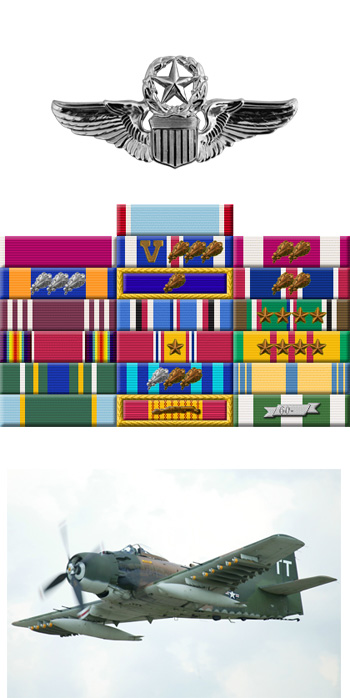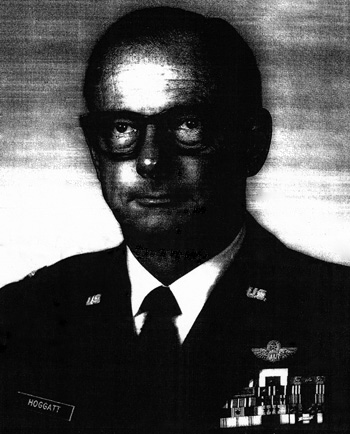
|
Ralph S. Hoggatt |
 |
|||
| Rank, Service | ||||
Colonel O-6, U.S. Air Force |
||||
| Veteran of: | ||||
|
||||
| Tribute: | ||||
Ralph Hoggatt was born on July 23, 1924, in Marshalltown, Iowa. He enlisted in the Enlisted Reserve Corps of the U.S. Army on October 23, 1942, and entered the Aviation Cadet Program of the U.S. Army Air Forces on February 20, 1943. Hoggatt was commissioned a 2d Lt and awarded his pilot wings on May 23, 1944, and then served as a B-24 Liberator pilot in the European Theater from December 1944 to May 1945. He left active duty on August 22, 1946, and served in the Air Force Reserve until he was recalled to active duty on May 1, 1951. Capt Hoggatt served as an Intercept Control Officer at Lackland AFB, Texas, from May 1951 to June 1954, and then at Minot AFB, North Dakota, from June 1954 to August 1955. He then transferred to Osan AB, South Korea, where he served from September 1955 to August 1956, followed by service as a C-124 Globemaster II and C-133 Cargomaster pilot with the 1st and 39th Air Transport Squadron at Dover AFB, Delaware, from September 1956 to January 1963. Maj Hoggatt then received an Air Force Institute of Technology assignment to Oklahoma State University, where he completed his Masters degree in Psychology in February 1964, followed by service with the 6570th Personnel Research Laboratory at Lackland AFB, Texas, from February 1964 to April 1967. After completing A-1 Skyraider Combat Crew Training, Col Hoggatt served with the 602nd Tactical Fighter Squadron at Udorn Royal Thai AFB, Thailand, from August 1967 to July 1968. He next served with Headquarters U.S. Air Force in the Pentagon from July 1968 to August 1971, followed by service with the Human Research Lab at Lackland AFB, Texas, until March 1973. The remainder of his career was spent in Armed Forces Vocational Testing and in Personnel Research at Randolph AFB, Texas, and Brooks AFB, Texas, where he retired from the Air Force on March 31, 1980. |
||||
|
||||

